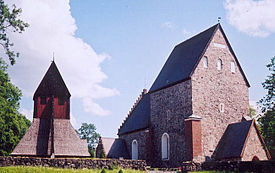Anders Celcius
Anders Celsius (November 27, 1701 – April 25, 1744) was a Swedish physicist and astronomer. He is known for devising a centigrade temperature scale, although different from the one on which the system used today is based, but which is called & # 34; Celsius & # 34; in memory of him. Swedish physicist and astronomer, creator of the thermometric scale that bears his name. Anders Celsius was one of the leading figures in the circle of great scientists who introduced new trends in natural science, experimental research, and the Newtonian vision of the world to Sweden. Olof Celsius's nephew, professor in Uppsala and founder of a school of botany, Anders Celsius was educated mainly in astronomy, but, like many other scientists of the time, he covered many other fields. Professor of astronomy at Uppsala University (1730-1744), he supervised the construction of the Uppsala Observatory, of which he was appointed director in 1740. In 1733 he published a collection of 316 observations of the northern lights and attempted to explain the northern lights as an atmospheric phenomenon; although his explanation would be discarded, in his time he made an epoch. In 1736 he participated in an expedition to Lapland to measure an arc of the Earth's meridian, which confirmed Newton's theory that the Earth flattened at the poles. He died a few years after the construction of the Uppsala Observatory, at just 42 years of age, a victim of acute tuberculosis.
Semblance
He was a professor of astronomy at the University of Uppsala (1730-1744), supervising the construction of the Uppsala Observatory, of which he was appointed director in 1740. In 1733 he published a collection of 316 observations of the northern lights. In 1736 he participated in an expedition to Lapland to measure an arc of the Earth's meridian, which confirmed Isaac Newton's theory that the Earth flattened at the poles.
In a memo that he presented to the Swedish Academy of Sciences, he proposed his centigrade temperature scale, although different from what was later known as the Celsius scale.
Celsius died on April 25, 1744, a victim of tuberculosis.
Celsius scale
During the 17th century a thermometer was graduated as "cold" placing it in a cave and "hot" exposing it to the rays of the summer sun or on a person's hot skin. Later, the Frenchman Réaumur graduated it with respect to the temperature at which water freezes at sea level and that of water when it boils at sea level, with a scale that went from 0 to 80 degrees.
In Sweden the Fahrenheit scale was used, but in 1742, Celsius proposed replacing that German scale with another, inverse, in which the point corresponding to the temperature 100 °C was equivalent to the boiling temperature of water at sea level. sea, while the temperature of 0 °C coincided with its freezing point at the same maritime mean level. The scale, therefore, indicated a decrease in degrees when the heat increased, contrary to what is currently known. His compatriot, the scientist Carlos von Linnaeus, would invert this scale three years later, although the resulting scale had already been previously introduced to France by Jean-Pierre Christin in 1743.
Acknowledgments
- The centigrade temperature scale is called Celsius in his memory.
- The Celsius lunar crater bears this name in his honor.
Contenido relacionado
Natural satellite
LIGO
Thermoionic valve
